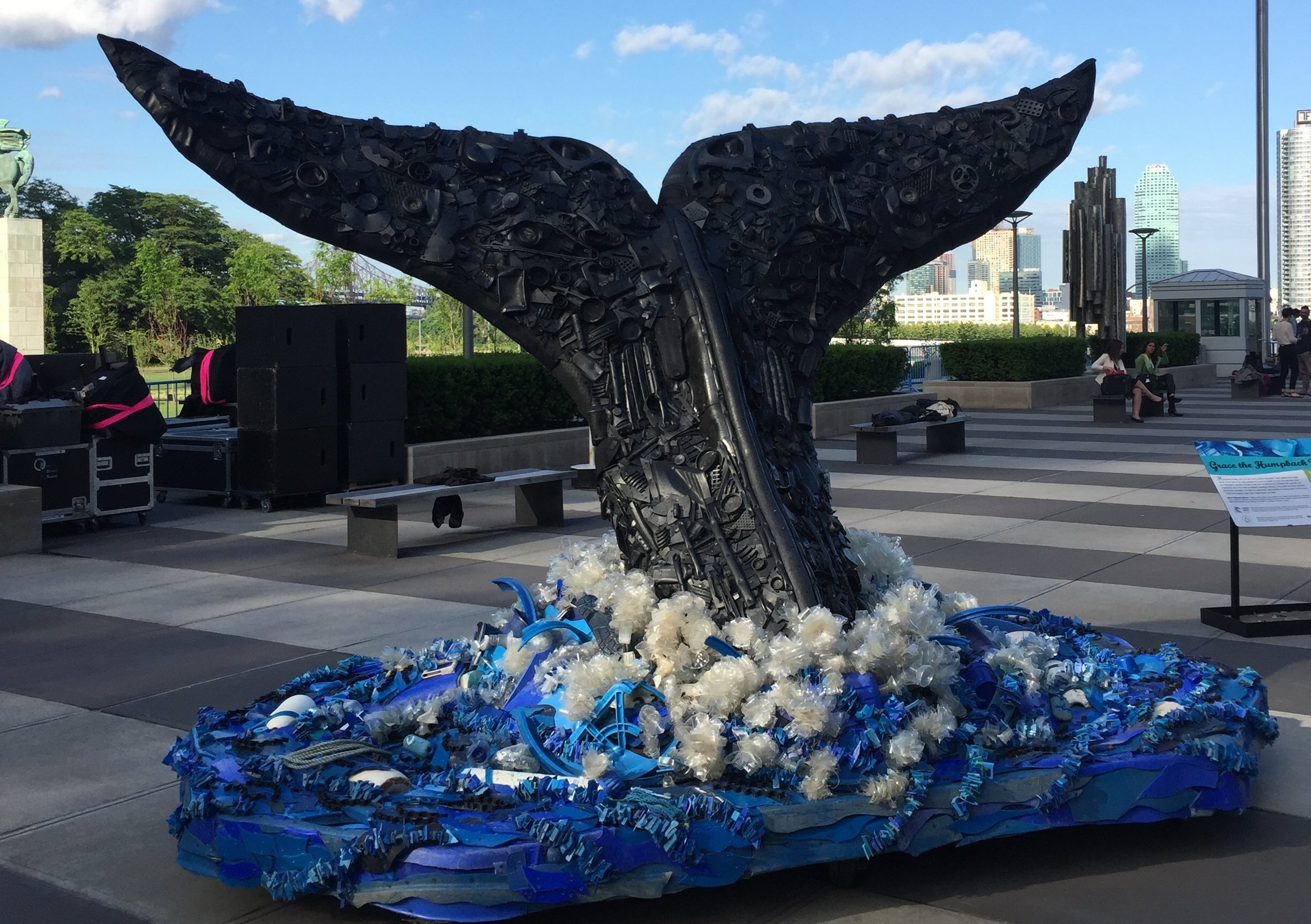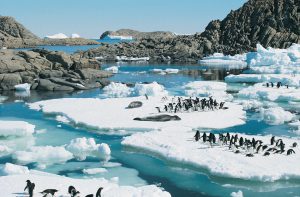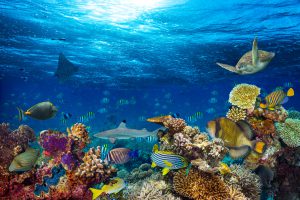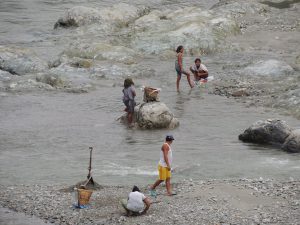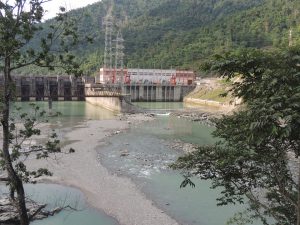New York – The first ever UN Ocean Conference came to a close on Friday 9 June with a Call For Action, over 1,300 voluntary commitments made to support ocean health, and aspirations for a new convention to protect biodiversity in the roughly half of our planet that lies beyond national jurisdictions.
The commitments range from vague policy intentions (as in the case of the five made by China) to declarations of marine protected areas extending for millions of square kilometres. Many of these conservation zones are being set up by small island developing states, or as they sometimes call themselves, “large ocean states”, whose fate in a world being altered by climate change was the subject of much attention at the conference.
Efforts to staunch the massive flow of plastic pollution into the seas, one of the most visible signs of the oceans’ decline, were another major point of emphasis. The threat of micro-plastics to human health, as small beads used in cosmetics and other industries end up being ingested by marine life and passed up the food chain, received particular attention.
“Our researchers have discovered that major sources of these micro-plastics include tyres and other large plastic objects that break down after getting dumped in the ocean, the particles used on artificial [turf] fields, and even the paint used as traffic markers on the street that get washed off,” said Isabella Lovin, conference co-chair and deputy prime minister of Sweden.
She said her country was one of seven in Europe that will be banning the use of microbeads in certain cosmetics products.
Considered to be the largest such gathering for the oceans ever convened, the Ocean Conference that took place at the UN headquarters in New York was designed to boost support for Sustainable Development Goal 14 (SDG14), which lays out targets to conserve and sustainably use marine resources.
“SDG14 is arguably the most ambitious of the goals, with targets not just for the year 2030 but also 2020 and 2025,” explained Andrew Hudson, head of Ocean and Water Governance for the UN Development Programme (UNDP).
“We’re supposed to go from 30% of global fish stocks being overfished down to 0% by 2020. That’s a 6% decrease every year from 2015. Has that been happening?”
The answer is almost certainly no, and underlying the conference was a general concern that progress on this sustainable development goal was lagging.
The commitments made at the conference will help but they’re non-binding. The treaty negotiations over rules that will govern the oceans in the future instead are taking place outside the conference. Notably, global delegates are due to gather in New York next month to decide whether to pursue an international agreement on managing the high seas: the roughly 70% of the oceans – nearly half the world’s surface area – that lie beyond national jurisdictions.
Heralded by Sir Richard Branson and Leonardo DiCaprio, two of the many celebrities who participated in the week’s ocean-related festivities, as a potential “Paris Agreement for the Ocean”, formal negotiations on this Biodiversity Beyond National Jurisdictions (BBNJ) agreement would take place under the UN Convention of the Law of the Sea (UNCLOS), according to Lisa Speer of the Natural Resources Defense Council.
“We began talking about a high seas convention about 10 years ago,” said Speer.
A convention would try to coordinate and sustainably manage all kinds of activities on the high seas – not just fishing, but mining, energy development, even carbon sequestration efforts – to try and maintain the immense biodiversity found in the oceans.
“China has been positively engaged and supportive” in the talks so far, she added.
All eyes on the US
The real question, noted other observers, is likely to be the position of the United States. With the start of the UN Ocean Conference overshadowed by the Trump administration’s announcement of its intention to leave the Paris Agreement on climate change, no one seems sure how it will engage in ocean-related treaty talks.
Although the US is not signatory to UNCLOS, explained Speer, it can participate in the negotiation of implementing agreements under the convention, and has already signed another such agreement on fisheries management.
US officials, like those from China, kept a low profile at the UN Ocean Conference, which was co-hosted by Sweden and Fiji. A brief statement made by a US official at the conference plenary emphasised the need, and the country’s efforts, to fight illegal, unreported and unregulated (IUU) fishing and lauded the recent entry into force of another treaty, the FAO Port States Agreement, which requires signatory parties to prevent vessels from landing illegally caught fishing products in ports.
Notable conventions
The UNDP’s Hudson, meanwhile, lauded another convention recently agreed to that will set rules for the disposal of ballast water from ships, a major vector for the introduction of invasive species.
“The price tag for the global shipping industry [to follow these rules] could end up being US$35-50 billion, so you might think they would be opposed,” explained Hudson. “But they are more concerned about all the different standards they currently have to face when entering different ports, so in the end they embraced the convention.”
The other major ocean-related negotiations currently under discussion are the subsidies that governments provide to fishing fleets. Critics say these have been spurring over-fishing and illegal activities on the high seas.
It’s estimated that the fisheries industry benefits from US$35 billion in subsidies every year, most of which are considered to be “harmful”, including fuel subsidies for China’s distant water fishing fleet. But these talks are being carried out under the auspices of the World Trade Organisation, and will be the focus at a ministerial meeting in Buenos Aires in December.
China’s position
The one side event at the conference organised by a Chinese institution focused on the Maritime Silk Road project and its plans to connect China with other nations via ocean trade. Asked about the government’s efforts to improve the sustainability of the oceans, Lu Shien, president of the International Development Information Organisation, which sponsored the side event, emphasised that China was investing in cleaning up the sewage and garbage that is polluting near-shore waters.
Keyin Chen, a neuroscientist turned ocean campaigner, noted that to curb overfishing, the government will need to think about not just reducing subsidies or over-capacity, but also helping to train fishermen to take on other jobs.
“Education and training is important. Otherwise there will be more pirate fishing because fishermen don’t know what else to do,” he said.
China is also the biggest source of plastic pollution in the oceans, responsible for an estimated one quarter of all the plastic flowing into the seas. The key to solving this problem, say experts, is improving solid waste management.
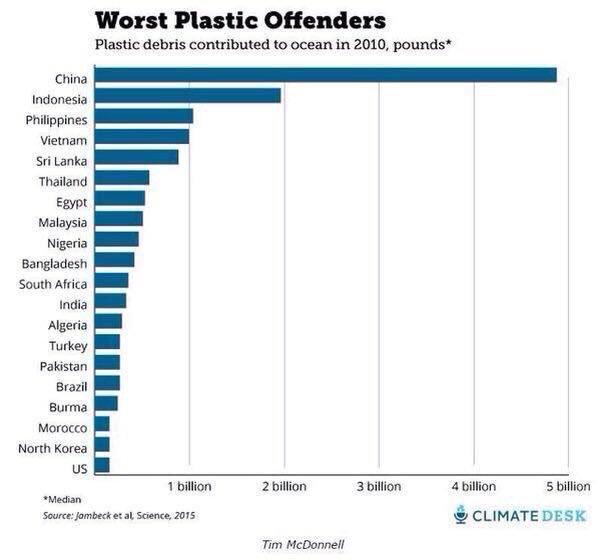
Indonesia, another major plastic polluter (the top six offenders are all thought to be countries from East or South Asia) has announced a Clean Seas Campaign that will spend US$1 billion per year to reduce its plastic pollution by 70% over the next eight years.
“The Chinese government has announced it will take action on this problem, although it is not clear yet what it will do,” said Erik Solheim, the UN Environment director. “Historically, China has looked more to its rivers than its oceans, so taking on ocean issues is new to China. But the country is moving so fast, I’m absolutely confident they will do this.”
